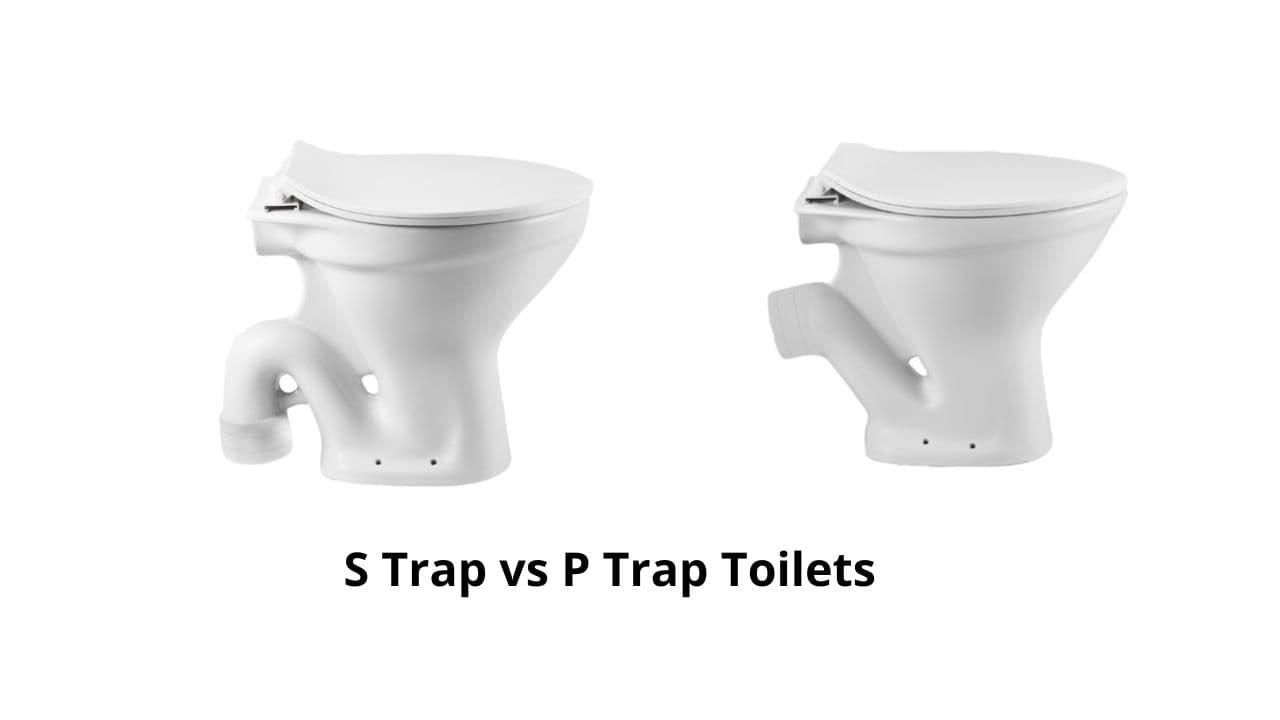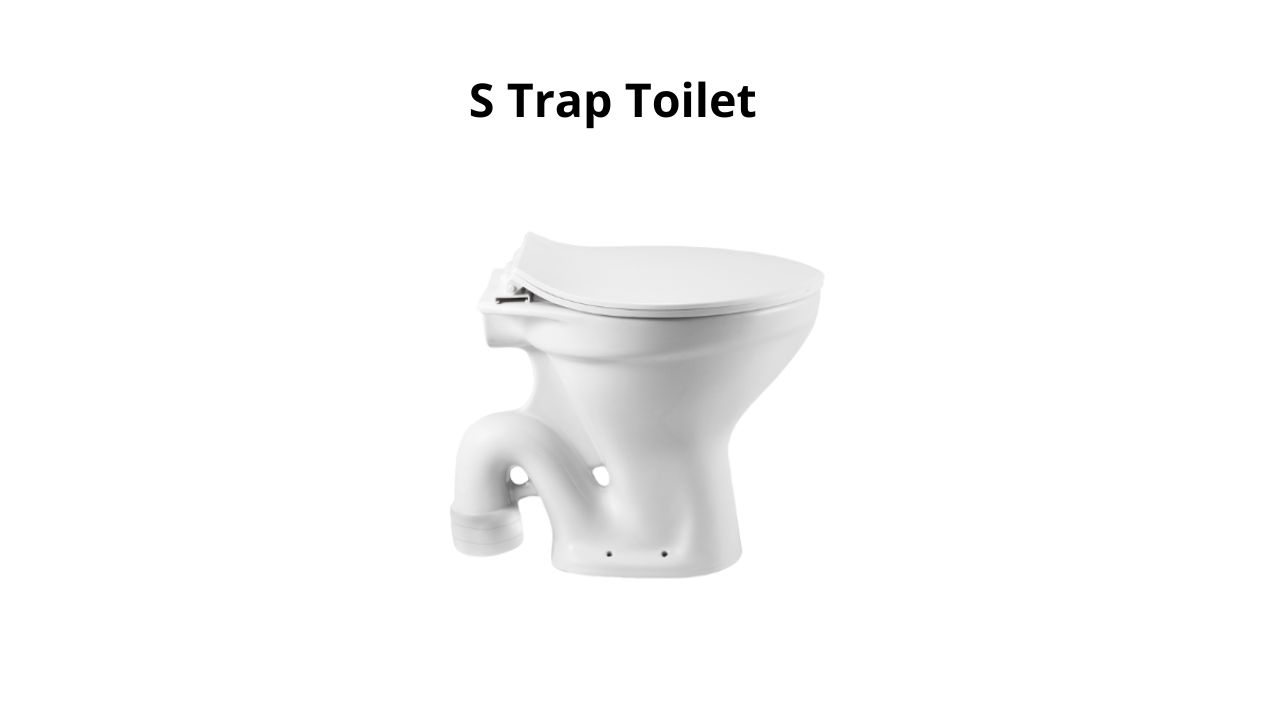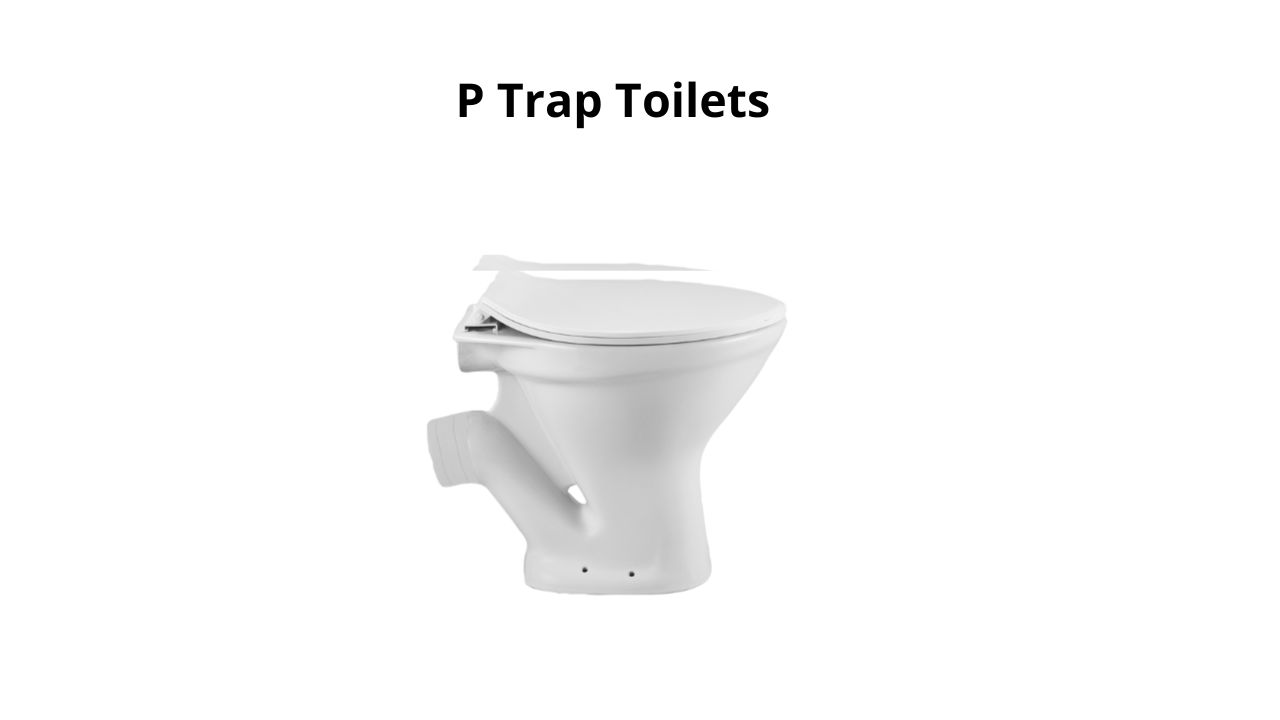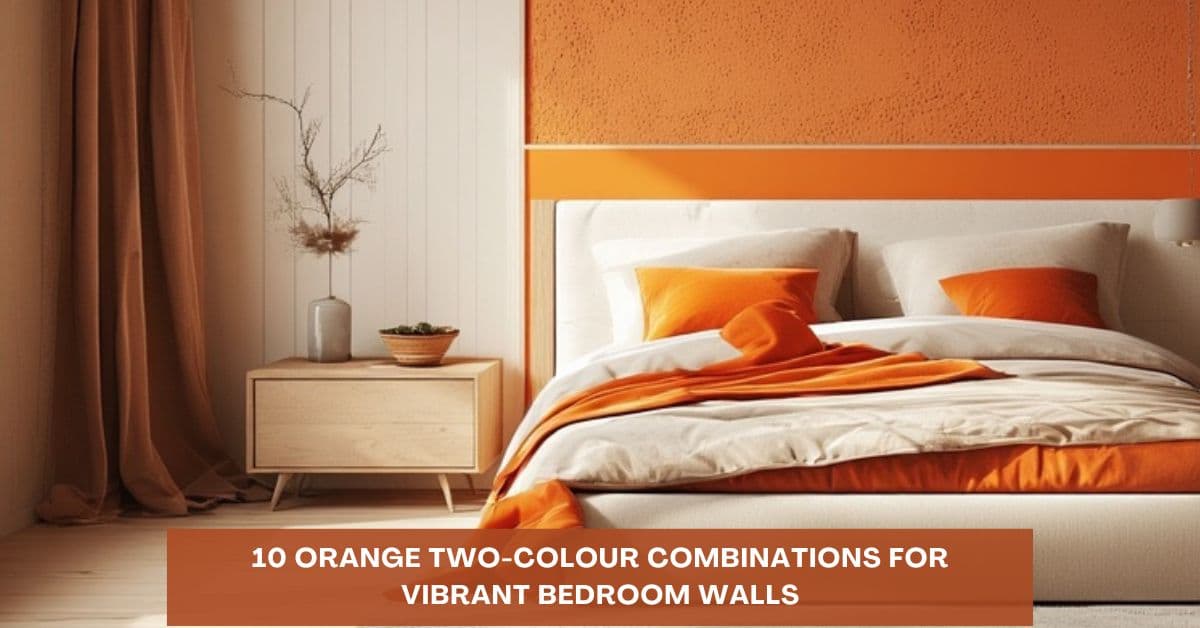S Trap vs P Trap Toilets: A Complete Comparison Guide

Understanding the difference between P and S trap toilet designs is essential when planning your bathroom. These traps refer to the shape of the pipe that connects your toilet to the drainage system—an important plumbing detail that affects installation and layout. In the debate of S trap vs P trap, choosing the right type ensures your toilet fits properly and functions smoothly, whether it’s a floor or wall outlet system.
What is an S Trap Toilet?

You may often find S trap toilets or water closet in older houses or traditional Indian homes. To identify it, check behind your toilet and if you see the pipe going into the floor, it’s an S trap. These toilets are built for setups where the main drain line runs under the flooring.
What is a P Trap Toilet?
 P trap toilets are designed for wall outlets. The waste pipe has a P-like shape and it connects through the wall behind the toilet. Just like the S trap, it also holds a small amount of water so that it can block off bad smell.
P trap toilets are designed for wall outlets. The waste pipe has a P-like shape and it connects through the wall behind the toilet. Just like the S trap, it also holds a small amount of water so that it can block off bad smell.
This western toilet setup is more common in newer flats or recently built homes. Since everything connects at the back, the toilet is placed very close to the wall. The result is a space that looks much neater and more modern.
Related Read: What Is a Bidet and How Does a Bidet Toilet Work?
Key Differences Between S Trap and P Trap Toilets
If you are wondering which to choose between P trap and S trap, then the most significant difference is where the waste pipe leads to. Here’s an overview:
|
Feature |
S trap Toilet |
P trap Toilet |
|
Outlet direction |
Connects to the floor |
Connects to the wall |
|
Pipe shape |
Has an S-shaped bend |
Has a P-shaped curve |
|
Typical setup |
Common in older homes or traditional Indian layouts |
Seen in newer flats or modern bathroom designs |
|
Look and placement |
May sit a bit away from the wall |
Usually fits snugly against the wall |
|
Installation |
Easier if a flooring outlet already exists |
Easier if the wall drainage is already in place |
|
Space-saving |
Takes slightly more space |
Better for compact or sleek designs |
Related Read: Different Types of Commodes for Your Bathroom
Pros and Cons of S Trap Toilets
Advantages:
S-trap toilets are ideal for bathrooms where the drainage outlet is in the floor. They are easy to install in such setups without needing major plumbing changes. This makes them cost-effective and convenient, especially during bathroom renovations or upgrades. Since the trap directly connects to the floor, it ensures strong and reliable drainage. These toilets typically come with a compatible toilet flush tank, which adds to their ease of use and installation. They are also commonly available, making replacements or upgrades simpler.
Disadvantages:
One downside is that S-trap toilets often need to be placed slightly away from the wall, which can impact space efficiency in compact bathrooms. Their exposed base plumbing can also make cleaning around the toilet more difficult. Additionally, if your drainage outlet is in the wall, installing an S-trap may require significant adjustments, making it less suitable. Despite this, if your bathroom is already designed for a floor outlet, sticking to an S-trap toilet with a matching flush tank is often the most practical choice.
Pros and Cons of P trap Toilets
Advantages:
P trap toilets are designed for bathrooms with wall drainage, making them a sleek and modern choice. These toilets sit flush against the wall, helping save space and enhancing the overall aesthetics of your bathroom. Since the trap and plumbing are hidden behind the wall, the setup appears neat and is easier to clean around. This makes P trap toilets a popular option in contemporary bathroom designs and newly constructed homes.The same type of wall outlet setup is often used for installing urinal pots, which further supports a clean and space-efficient layout in modern bathrooms.
Disadvantages:
However, installing a P trap toilet in a bathroom originally built with floor drainage can be challenging. The conversion may require significant changes, such as removing tiles, rerouting the pipework, and involving additional labour. This can lead to higher costs and longer installation times. As a result, unless you're undergoing a complete renovation, switching from an S trap to a P trap might not be the most practical or budget-friendly option.
Related Read: Top Trends in Modern Commode Design 2025
Which One Should You Choose: S Trap vs P Trap Toilets?
Choosing between an S trap and a P trap toilet depends entirely on your bathroom’s existing outlet. If the drainage is on the floor, go for an S trap. If it’s on the wall, a P trap will work best. Picking the wrong trap for the outlet can lead to fitting issues and costly adjustments.
At Simpolo Tiles and Bathware, we always recommend checking your plumbing layout before purchase. To make it easier, our Virtual Space Creator tool lets you visualise different toilet styles in a 3D setup—helping you choose what truly fits your space.
Choosing the wrong trap type:
- P trap toilets are meant for wall outlets; they won’t align with floor outlets.
- S trap toilets are for floor outlets; they won’t fit wall outlets.
- Using the wrong type can cause poor connectivity and costly rework.
Forcing the toilet into position:
- This can break the seal, leading to long-term leaks and damage.
Not measuring trap distance:
- Always measure the distance between the outlet and the wall or floor before purchase.
Ignoring plumbing compatibility:
- Check your existing plumbing setup or consult a professional to avoid mismatch.
Skipping layout planning:
- Use tools like Simpolo’s Digital Showroom to visualise 3D bathroom layouts and ensure accurate planning.
Improper urinal placement:
- Leave enough space if you plan to install a urinal.
Consider space-saving options like Simpolo’s Savvy and Antea ceramic urinals—sleek, low-maintenance, and suitable for both homes and commercial spaces.
Conclusion: S Trap vs P Trap
Choosing between an S trap and P trap toilet depends entirely on your bathroom’s existing plumbing. Floor outlets work best with S trap toilets, while wall outlets are ideal for P trap models. There’s no single right answer—just the right fit for your space. At Simpolo Tiles and Bathware, we offer both styles in premium finishes and help you make the best choice. With tools like our 3D Virtual Space Creator and Smart Code previews, planning becomes easier and more accurate.
Reach out to us for guidance tailored to your bathroom layout.
Related Read: Indian vs Western Toilet: Pros, Cons & Key Differences
FAQs about S Trap vs P Trap Toilets
1. What is the difference between S trap and P trap toilets?
S trap toilets connect to the floor drain, while P trap toilets connect to a wall drain. Both types use a water seal to block odours but differ in outlet direction and installation style.
2. Which is better: S trap or P trap?
Neither is better overall—it depends on your plumbing. S traps work with floor outlets, while P traps are ideal for wall outlets.
3. Can they be used interchangeably?
Not directly. An S trap won’t fit a wall outlet and vice versa. Converting between the two requires plumbing adjustments.
4. Are S traps more clog-prone?
No. If installed properly, both function equally well and aren’t more or less likely to clog.







